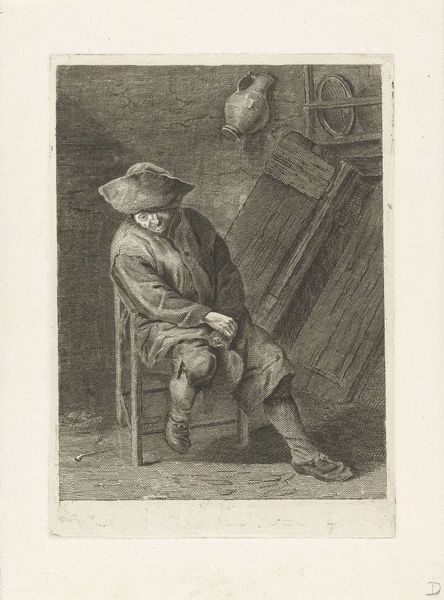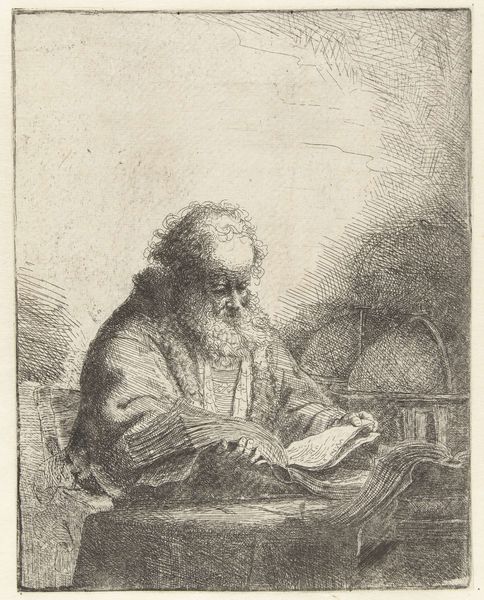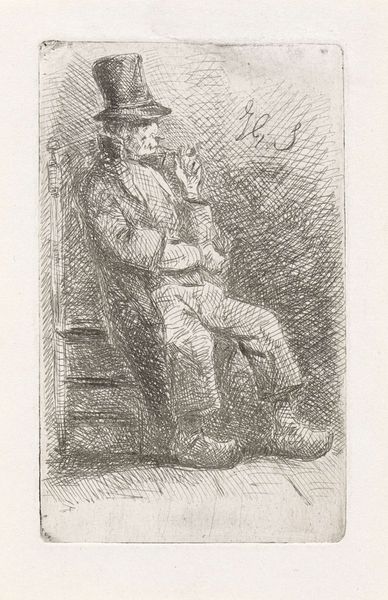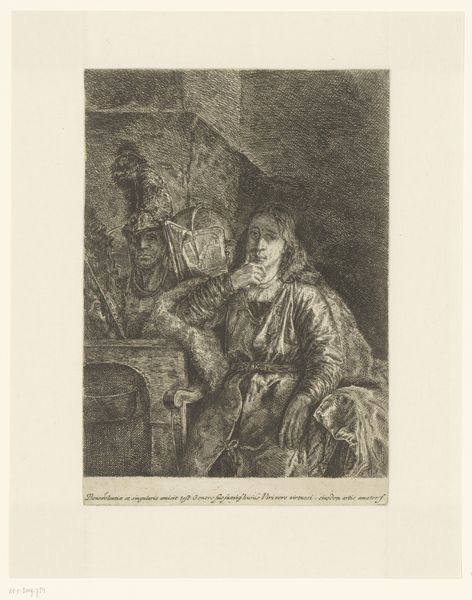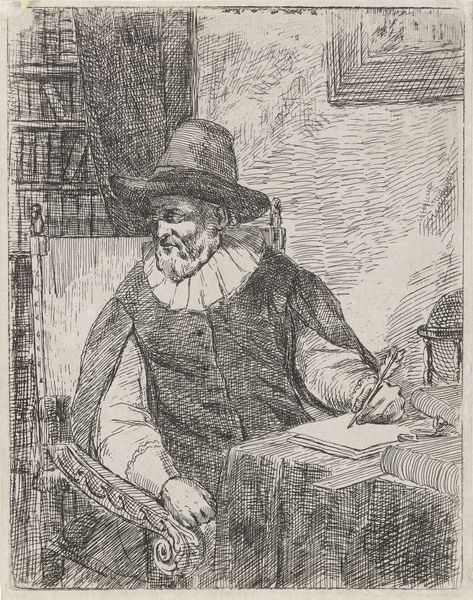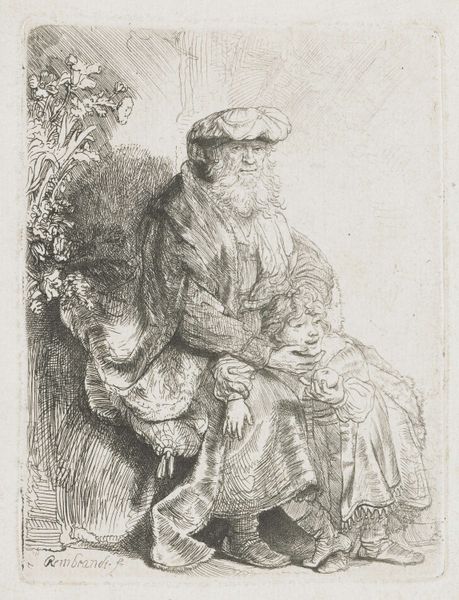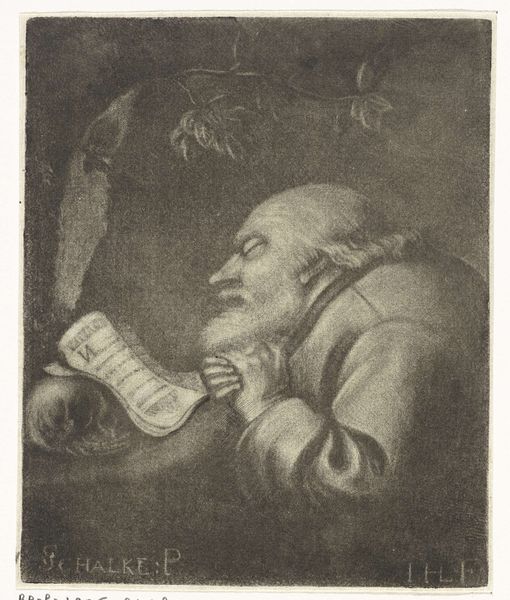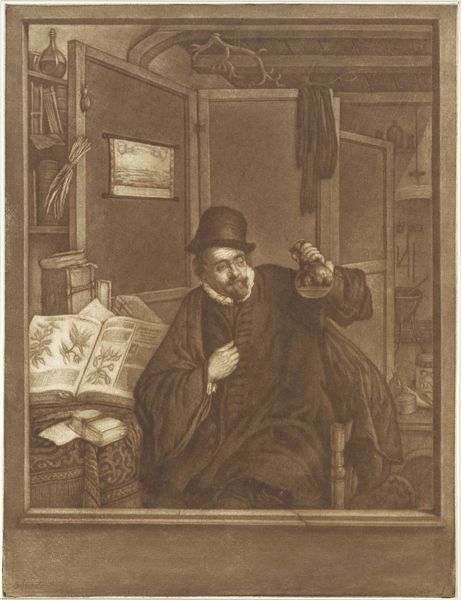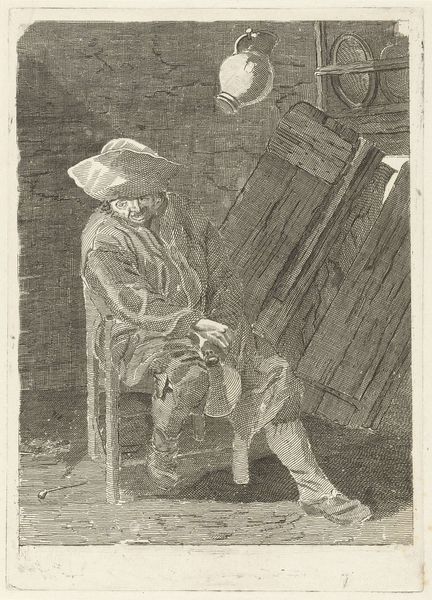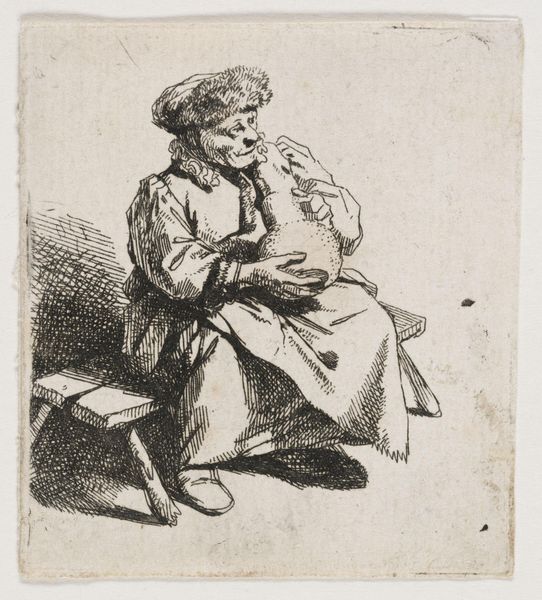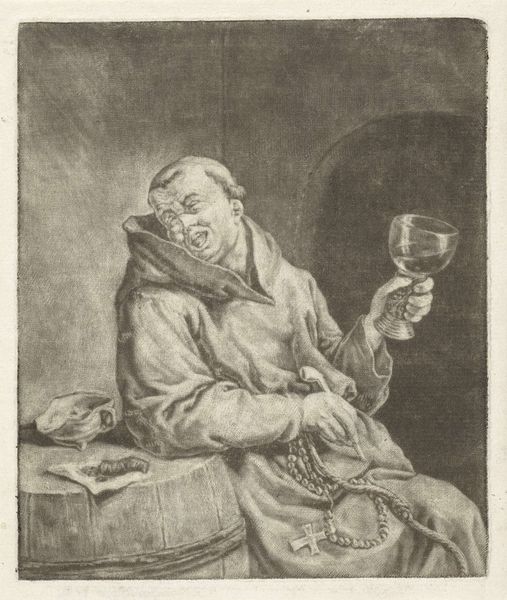
print, etching
#
portrait
#
baroque
# print
#
etching
#
figuration
#
genre-painting
#
history-painting
Dimensions: height 228 mm, width 181 mm
Copyright: Rijks Museum: Open Domain
Curator: Ferdinand Bol's etching, "Peinzende filosoof," from 1653, depicts exactly that, a contemplative philosopher amidst his studies. The work can be found at the Rijksmuseum. Editor: My first impression is the heavy feeling of introspection; you can almost see the gears turning in this man’s head. The tonality gives everything a hazy, weighty feel. Curator: It certainly encapsulates a particular ideal of learned contemplation, which speaks volumes about the status afforded to philosophy during the Baroque period. Look closely, you’ll note Bol’s attention to the philosopher's worn garb and the overflowing study is telling of the relationship between wisdom and worldly neglect. How might this speak to contemporary attitudes toward intellect? Editor: Today, perhaps, we might see the neglect as a sort of… intellectual privilege. A deliberate rejection of capitalist ideals, suggesting knowledge production exists outside those constraints, which is something we still grapple with today concerning equitable access to research, open-source information, and intellectual property. I also wonder who he imagines as the audience for this etching, and how that audience might react. Curator: Well, the availability of prints allowed broader dissemination of imagery beyond the wealthy elites who traditionally commissioned paintings, altering dynamics within artistic production and reception in the mid-17th century. It suggests a budding recognition of, or perhaps a strategic catering towards, a burgeoning intellectual class. Did the philosopher, as a concept, become commodifiable? Editor: Fascinating. I see the etching as pushing the boundaries of representation, portraying the private mental space of intellectual work. The gaze is directed inward; the scene rendered with intense hatching seems less about objective reality and more about the drama within one's mind. Maybe his intent wasn't commodification but, rather, empathy? Curator: It’s this intersection – the material availability and the imagined empathetic connection – which grants "Peinzende filosoof" continued relevance, a constant negotiation between accessibility and the desire to access and distribute abstract thinking. Editor: Precisely. This etching encapsulates so much—status, intellectual access, and artistic agency—in one seemingly simple, quiet, reflective moment.
Comments
No comments
Be the first to comment and join the conversation on the ultimate creative platform.



